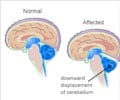- Electrical stimulation in the brain evokes instant laughter followed by a sense of happiness and calmness in a patient undergoing awake brain surgery
- In addition to keeping patients undergoing awake brain surgery calm, cingulum stimulation can also be used in treating anxiety disorders, depression and chronic pain conditions
This finding was used to complete another awake brain surgery in the same patient two days later. Additionally, these findings were confirmed in two other epilepsy patients who were undergoing diagnostic monitoring.
The study was reported by neuroscientists at Emory University School of Medicine and the findings were slated to appear in the Journal of Clinical Investigation.
Read More..
Effects of Cingulum Stimulation During Awake Brain Surgery
The senior author of this study author was Jon T, Willie, MD, Ph.D, who performed the surgeries along with his team. He is the assistant professor of neurosurgery and neurology at Emory University School of Medicine.- The sites of initial electrode placement were chosen to record brain activity and locate the trigger area for seizures
- The electrode used to stimulate the cingulum bundle was introduced in a different manner from the usual standard procedure because of the first patient's earlier surgeries; a rear approach was used resulting in the broader extent of cingulum bundle being sampled for electrical stimulation.
- On stimulating the cingulum bundle, there was immediate laughter followed by happiness and calm state of mind
- To test the first patient’s mood, the team showed her faces and asked her to interpret them as happy sad or neutral. Stimulation of the cingulum bundle induced a positive mood (affective bias) and made her view the faces as happy.
- Two other patients also underwent cingulum stimulation for behavioral testing and reported mood elevation and reduction of pain and at higher levels of current, laughter was produced
- During cingulum stimulation, one of the latter patients undertook tests for language, memory and performed normally, except for a task requiring recollection of items from a list which was slightly delayed
Cingulum Stimulation - Possible Game Changer in Awake Brain Surgery
The cingulum bundle is a tract of nerve fibers in the midbrain that has a shape resembling a girdle or belt - hence its Latin name. The brain area known to produce laughter and relaxation lies at the top and front of the bundle. Thus this bundle is a logical target due to its wide-reaching connections among brain regions that regulate emotional responses.Cingulum bundle stimulation may be a potentially novel method to calm some patients during awake brain surgery, which can normally make patients nervous.
To reduce the risk of damage to vital structures during brain surgery, patients need to stay awake, so that doctors can talk with them, assess their language skills, responses and other functions to find out if these are getting affected by the removal of tumor tissue.
"Even well-prepared patients may panic during awake surgery, which can be dangerous," says lead author Kelly Bijanki, Ph.D, assistant professor of neurosurgery. "This particular patient was especially prone to it because of moderate baseline anxiety. And upon waking from global anesthesia, she did indeed begin to panic. When we turned on her cingulum stimulation, she immediately reported feeling happy and relaxed, told jokes about her family, and was able to tolerate the awake procedure successfully."
Summary
Stimulation of cingulum fibers in the brain can be used to produce relaxation in patients undergoing awake brain surgery as well for potential treatment of anxiety, depression and chronic pain disorders.Reference:
- Cingulum stimulation enhances positive affect and anxiolysis to facilitate awake craniotomy - (https://www.jci.org/articles/view/120110)
Source-Medindia















